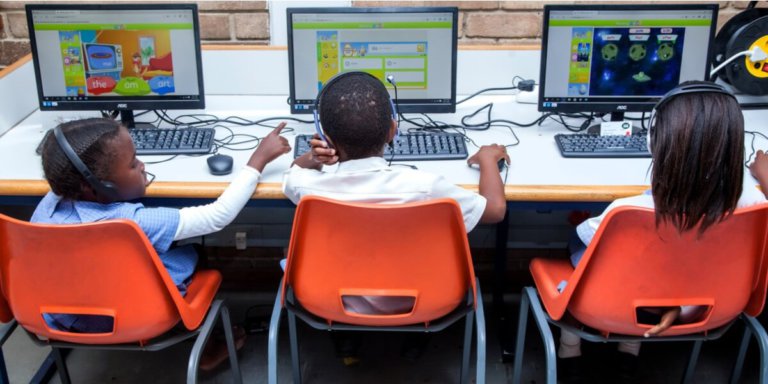
The use of classroom technology in the form of iPads, computers and interactive whiteboards are becoming so commonplace in some schools that it’s hard for teachers to remember a time without them.
While education technology certainly has several benefits for teachers and students alike – such as making learning more fun, bridging communication gaps and engaging more students – are schools becoming overly reliant on screens?
In line with 21st century learning trends, today’s kids are being taught how to be effective communicators, empathethic listeners, and be well-versed on interpersonal communication.
Face-to-face communication is best for developing these types of skills, but overuse of screen technology in school classes could hinder progression.
Matthew Howell, a middle school principal, recently relayed his experience of implementing “screen-free” days in his school once every quarter on Edutopia.
He wrote, “It’s clear that our students spend a lot of time online. That’s why the staff at my school dedicated time to discussing healthy practices for the integration of technology.
“While there is no conclusive research regarding what is best, we discussed the life of a typical student and the impact constant access to the internet and social media has on their well-being.”
As students today are digital natives, they couldn’t quite comprehend being away from their beloved Chromebooks for one day a week. But once they got used to the idea, they actually found it quite enjoyable.
After Global School Play Day #GSPD2019 last week, the class requested to play screen-free in homeroom once a week, calling it Way Back When-sday. Great times together! pic.twitter.com/PlG0tKAgVK
— ClassOfKindness (@ClassOfKindness) February 14, 2019
Howell wrote, “After our first screen-free day, students mentioned that they were surprised they had enjoyed it, and they expressed an unexpected sense of relief.
“Finding ways to help our students connect with one another is essential. While technology is woven into the fabric of our world, it should not be the dominant thread in the tapestry of a learner’s life.”
Howell also wanted to incorporate screen-free days during the school year due to the rising cases of student anxiety and depression, which could be attributed to the amount of time students spend online.
So how did students learn on days where screens were not allowed in school?
According to Howell, “Instructionally, these days allow us to consider our approach to the curriculum from another perspective.
“For some teachers, this means unearthing a lesson plan that is valuable but has been tabled for some time, while others come up with something completely new. Teachers collaborate and seek ways to help students build their imaginative faculties through hands-on activities.
“On our first screen-free day this year, for example, some teachers planned hands-on, collaborative STEAM activities focused on the engineering and design process.
“Another teacher facilitated an escape room with students, using challenges linked to literary devices. There is an increase across the board in creating opportunities for students to reflect on their learning as well.”
The @GHSPublicHealth class planned a “screen-free” last day for the entire school. Students spent the morning being “tech-free,” playing board games, dodgeball, & enjoying lunch grilled by Dr. @BakerbBob. Thanks @StoneCoHealth & @kmichaelprince w/ @BecauseFamily for the support! pic.twitter.com/EQlw5WdirW
— Ryan Lacson (@noscals) May 17, 2019
The school also plans to hold simple events that give students the chance to socialise without devices, such as Board Game Nights.
Howell wrote, “We want our learners to enjoy face-to-face interactions without checking on their social media likes or considering comments made on their latest group assignment in the cloud.”
By taking a screen-free day every now and then, schools provide a balance where technology and face-to-face interaction are equally utilised.
In doing so, students take a break from screens while developing social-emotional learning skills through other tech-free means.
Liked this? Then you’ll love…
What is Holoportation technology and how is it used in schools?
Robots to the rescue: How technology helps chronically ill students keep up in school







